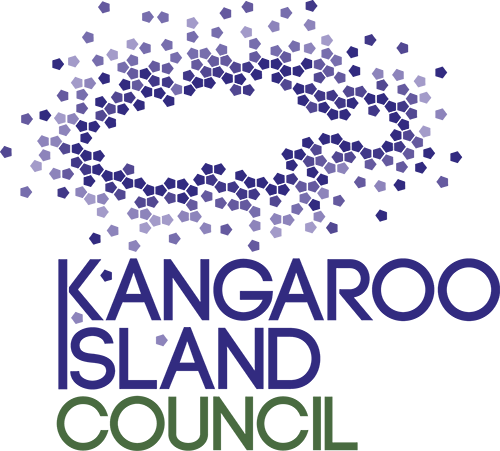About Kangaroo Island
Kangaroo Island is located 110 km (70 miles) south-west of Adelaide and easily accessible by ferry or plane. A mix of attractive small townships and fascinating wilderness; Kangaroo Island is Australia's third largest island.
Kangaroo Island statistics:
- Approximately 1600 km (1000 miles) of sealed and unsealed roads
- 509 km (318.2 miles) coastline
- 155 km (96 miles) from east to west
- 55 km (34.5 miles) at it's widest point
- 1 km (.6 miles) at it's narrowest point
- Highest altitude 307 m (1,010 feet).
Kangaroo Island Council
The Kangaroo Island Council covers an area of approximately 4400 square kilometres (1698 square miles) and is home to a resident population of 4413 (Australian Bureau of Statistics, 2011) and greater than 190000 state, interstate and international tourists each year (TOMM Visitor Exit survey, 2013/14).
Kangaroo Island Council was formed in 1996 after the amalgamation of the District Council of Dudley and the District Council of Kingscote. The Island has a number of settlements including American River, Baudin Beach, Brownlow KI, Emu Bay, Island Beach, Kingscote, Nepean Bay, Parndana, Penneshaw, Stokes Bay and Vivonne Bay.
Kangaroo Island
It was Captain Matthew Flinders aboard the Investigator who is credited as being the first European to officially site the Island in March 1802. Flinders landed on the North Coast of the Island, giving it the name 'Kanguroo Island' which is still bears today, albeit the spelling has changed.
Shortly after, Nicolas Thomas Baudin who captained the Corvette 'Le Géographe' and Jacques Félix Emmanuel Hamelin who captained the Storeship 'Le Naturaliste' mapped most of the southern and western coastline of the Island, which is why many parts along this coastline still have French names.
The early explorers of Kangaroo Island found no evidence of Aboriginal inhabitants. It was not until the early 1900's that Aboriginal artefacts and campsites were found and subsequent dating suggests that the Island was inhabited as early as 10,000 years ago. It is still a mystery as to why the Aboriginal people may have left the Island.
The first European settlers of the Island were deserters from English and American whaling ships and sealers who arrived on the Island in the early 1800's. It was not until July 1836 that the first official settlers arrived aboard the Duke of York. As the first free settlement in Australia, the new settlement of Kingscote was dogged by the lack of water and suitable building timber. After four years, it was abandoned in favour of Adelaide.
The early settlers built a pastoral industry mainly focused on wool, however barley and other grains were also grown. Whilst in the process of establishing this industry, the farmers derived the majority of their income from the felling of trees, animal skins and distilling eucalyptus oil.
The Island continued to develop slowly, with an estimated population of 1,113 in 1947 however, after the end of World War II, the Government established a War Service Land Settlement Scheme where ex-soldiers would be settled and encouraged to farm the undeveloped land on the Island's central plateau. 174 soldier settlers and their families came to the Island, and by 1954 the population had increased to 2,167.
The agriculture sector, consisting mostly of sheep, wool, grains, fishing and forestry, continues to be a significant contributor the Island's economy, providing the major source of employment for around 20% of the resident population (Australian Bureau of Statistics, 2011). A substantial income is also derived from the tourism sector as Kangaroo Island has become a popular tourism destination with 21 national and conservation parks covering more than 30% of the Island and dramatic scenery ranging from the Little Sahara to huge sculptured granite boulders, which are truly 'Remarkable Rocks'.
Having separated from the mainland during the last Ice Age, Kangaroo Island has retained many plants and animals no longer found elsewhere. There are over 850 native plants registered on Kangaroo Island with over 400 different species found within the Flinders Chase National Park. Free from mainland rabbits and foxes, the Island is a natural habitat for platypus, goanna, glossy black cockatoo, albatross, seals, penguins and the Island's own species of kangaroo. Its shores are also home to the elusive leafy-sea dragon.
The people of Kangaroo Island are proud of their unique history and the natural beauty of the Island. They enjoy a high quality of life and are well placed to capitalise on their position in the world to secure a prosperous and vibrant future.

